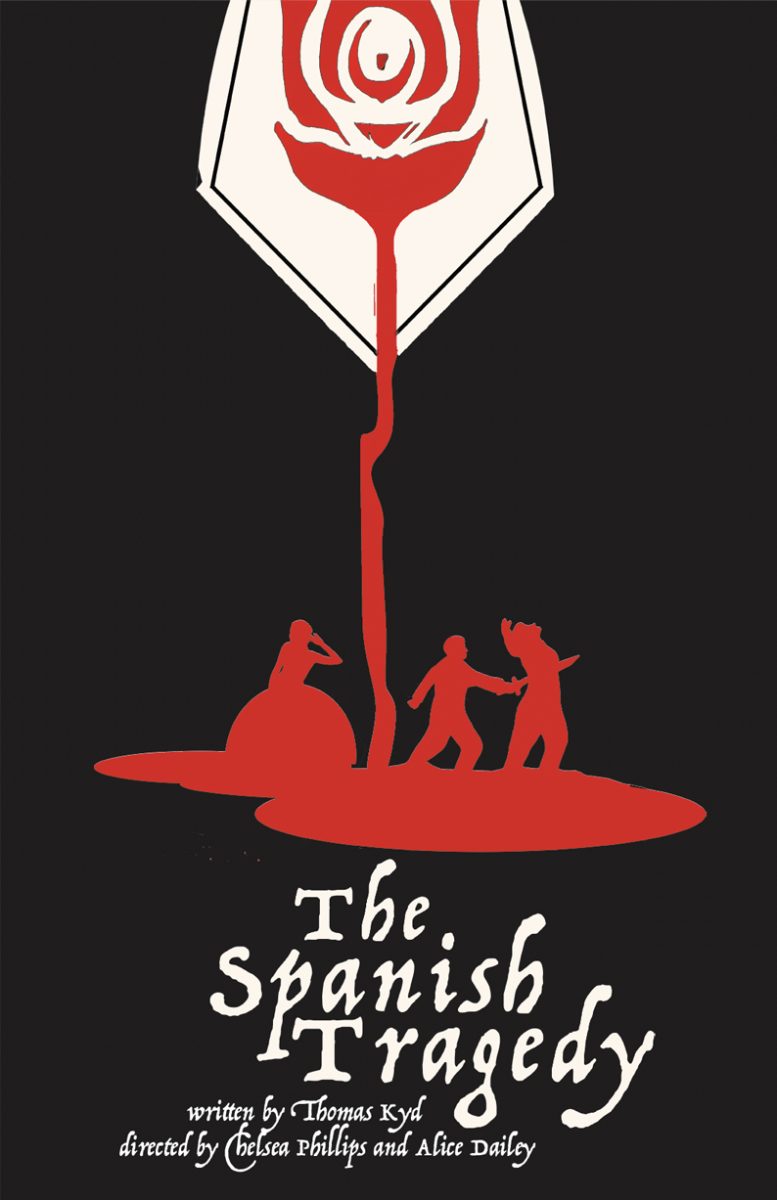From April 11 to April 21, the Villanova Theatre Department presents Thomas Kyd’s The Spanish Tragedy, directed by Dr. Alice Dailey and Dr. Chelsea Phillips. Written between 1582 and 1592, The Spanish Tragedy established a new genre in English theatre: the revenge play, otherwise known as the revenge tragedy. William Shakespeare’s Hamlet, Othello, King Lear and Titus Andronicus are often cited as popular examples of revenge tragedies. It is hypothesized that The Spanish Tragedy inspired Shakespeare with elements such as a play-within-a-play used to trap a murderer.
In addition, Dailey and Phillips taught a course titled “Legacies of Revenge Across Time, Space, Genre, and Media” in the Fall of 2023 ,that involved the study of the play and its dynamics of revenge in context with western culture.
The Spanish Tragedy opens in the Courts of Spain and Portugal in the aftermath of a battle between the two nations wherein the Viceroy of Portugal’s (David Adah-Ogoh) son Balthazar (Justin Badoyen) has killed the Spanish officer Don Andrea (Emily Mosset). The ghost of Don Andrea and the personification of Revenge serve as the equivalent of a Greek chorus. Don Andrea’s lover, Bel-Imperia (Emma Drennen) promises to murder Balthazar, but he begins to fall in love with her. Bel-Imperia’s grieving heart, however, belongs to Horatio (Owen Dorlac), the son of the Knight Marshal of Spain, Hieronimo (James Keegan). The Spanish Tragedy is filled with revenge plots, love triangles, political intrigue, farcical comedy and of course, violence.
The Spanish Tragedy comes with content warnings for depictions of graphic violence, murder, suicide, discussion and exercise of capital punishment, self-inflicted dismemberment and gun usage. The physical violence in the play is used to augment the deep emotional pain felt by the characters.
Adah-Ogoh and Keegan, playing father figures, tapped into the uncontrollable rage that a parent may feel at the mere thought of their child being endangered or hurt. Drennen encapsulated the confusing emotions that Bel-Imperia felt as she navigated revenge on behalf of her dead lover and the desire to find happiness with someone new simultaneously.
Another impressive aspect of the show was the set, which uniquely enough was not constricted to the stage. The show boasted a multi-level structure with two floors accessible by a staircase for the actors, decorated with an Iberian motif. In addition, to emphasize the idea that The Spanish Tragedy contains characters from two worlds, the stage serves as a representation of the world of the living as well as the afterlife. The house, shrouded in darkness, is where Don Andrea watches the story unfold, along with the rest of the audience, from the Underworld.
The Spanish Tragedy is most definitely a play worth seeing. This upcoming Friday and Saturday, April 19 and 20, the John and Joan Mullen Center for the Performing Arts will host a The Spanish Tragedy Symposium with keynotes by Dr. Richard Preiss (University of Utah) and Dr. Andrea Stevens (University of Illinois, Urbana-Champaign), including facilitated discussions and reception.
To purchase tickets, visit the Villanova Theatre website at https://villanovatheatre.org.







